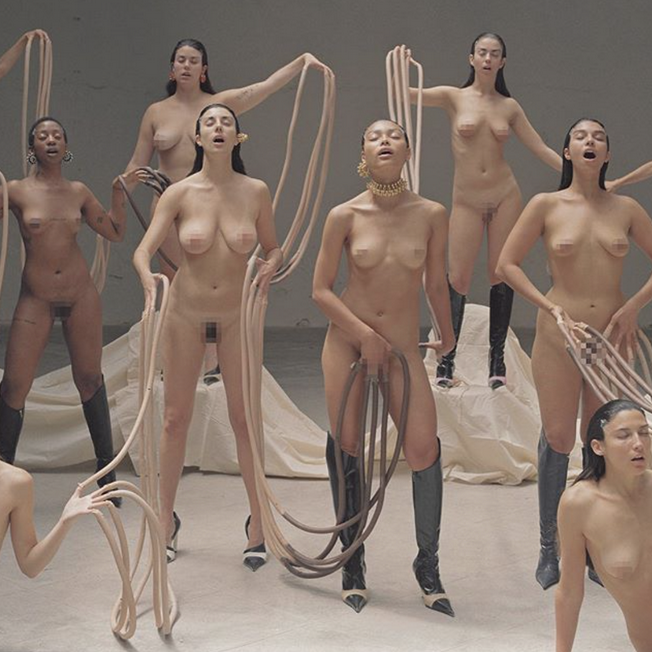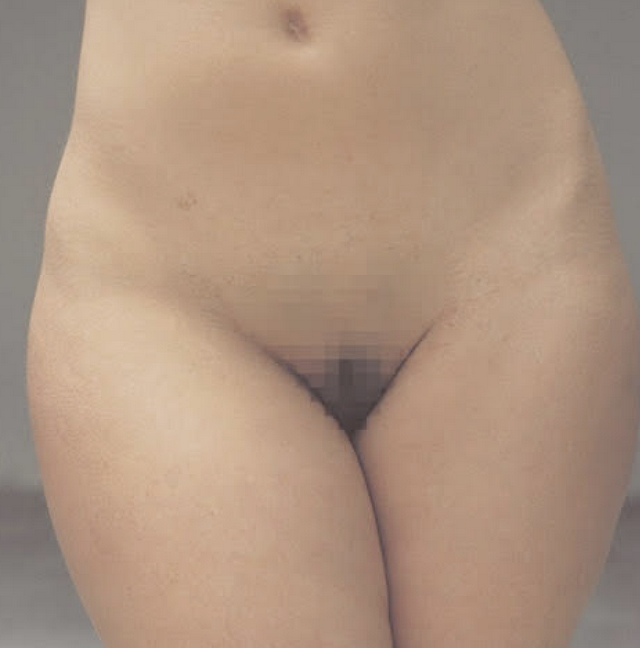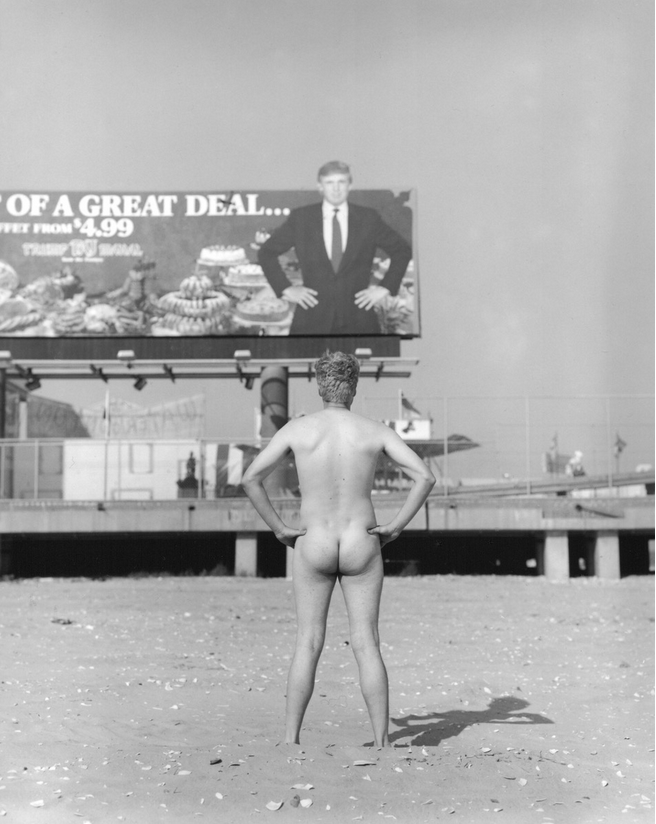Tips for Posting Art
This page was last updated December 19, 2023. [New information in pink.]
The Community Guidelines on many social media platforms remain vague and overly restrictive of artistic expression, especially when art contains nudity. The Don’t Delete Art campaign urges social media platforms to recognize and respect artwork in the language and enforcement of community guidelines. This resource center offers guidance in understanding and working around existing community guidelines when publishing art on social media platforms. This information is sourced from published community guidelines and resources from Instagram and Facebook, as well as from artists’ direct experiences with social media censorship.
If you have further questions, please email us at dontdeleteart@gmail.com, and we will do our best to answer them. If you believe your work was wrongfully taken down, please be sure that you have exhausted all avenues for appeal before contacting us. Click here for appeal information.
Before Posting Your Artwork
Understanding Recommendations Guidelines and how they relate to Downranking/“Shadowbans”:
Although not an official term used by Meta, a “Shadowban” or Downranking is the reduced visibility of certain content that violates Meta’s Recommendations Guidelines but does not violate the platform’s Community Guidelines or terms of service. Downranking occurs when content is allowed on the platform, but is not allowed to be easily discovered by users who don’t already follow the posting account. It entails content not being shown on recommending interfaces like “Explore,” “Accounts you may like,” “Reels,” or “Search,” or not being visibly linked to its designated hashtags.
In its Recommendations Guidelines, Meta describes that posts which depict self-harm, violence, content that may be sexually explicit or suggestive (“such as pictures of people in see-through clothing”), content that promotes the use of regulated products (tobacco, recreational or prescription drugs), or content from “not-recommendable accounts,” is not eligible for recommendation. Many properly censored nudes, even if not intended as sexually suggestive, appear to be interpreted by Meta and its algorithms as "sexually suggestive" and are likely to be downranked on Meta for not meeting its Recommendations Guidelines.
It seems likely that having multiple or frequent posts which are not eligible for recommendation may make it so your entire account is less likely to be recommended. This would explain why some unrelated, third-party accounts are able to re-post artistic content and have it get recommended, while the original artists’ accounts themselves rarely seem to be recommended.
Beginning in December 2022, Meta announced that “new transparency tools” would be available for “Professional Accounts,” that will detail what account content is eligible for recommendation to non-followers, and what content is not eligible. This expansion also includes opportunities for Professional Account holders to appeal any assessments that their content might violate the Recommendations Guidelines and combat downranking of their accounts and posts.
What you can do:
Register your account as a Professional/Business Account to improve the likelihood that you’ll receive information about whether your content meets the guidelines for recommendation. If you receive notification that your content does not meet these guidelines, either alter your content accordingly, or appeal that assessment by clicking the button that reads “Disagree with decision” if you believe your content meets the Recommendations Guidelines.
Review your Account Status. (Note: how to access Account Status may depend on your account user interface and your geographic location.)
Go to your Profile Icon → Tap the 3 horizontal bars in the upper right → Settings and privacy → Account Status (scroll all the way down)
You can see if you have any Recommendations Violations in the “What can’t be recommended” area. From here, you can follow the steps below to see if you can improve the reach of your page.
When directing people to your account, instruct them to search for your full account name. Many downranked accounts appear not to show up until the full name is typed into Search functions in IG. We are seeing that even verified professional accounts with wide followings are being downranked for violating the recommendation guidelines, even if the content is not intended to be sexual in nature and properly censored.
Exercise caution when sending images of nude artwork—even if it’s censored—via direct message in IG/FB Messenger.
If you have visible Recommendations Guidelines Violations, or if you suspect your account is “unrecommendable” and want to prioritize its reach to non-followers, consider the following:
If you are posting (censored) nudity, or suggestive nudity, you are more likely to be flagged as "unrecommendable" if your account has many posts like these.
If you have a few posts flagged for Recommendations Guidelines Violations in Account Status, try deleting or archiving a few of the posts and appealing the ones you consider to be wrongly flagged. You can appeal the wrongfully-flagged posts by tapping the blue Appeal Decision button at the bottom. However, you must first delete or archive other flagged posts to remove them from the list before appealing the posts you do not want to delete or archive, as this is a bulk action.
Plan a few weeks of posts that are unlikely to violate the Recommendations Guidelines. Check your Account Status frequently to see if the Recommendations Guidelines Violations have been resolved. In our experiments, we are seeing that our test accounts have often become "Recommendable" following this process. The benefit is, for "Recommendable" accounts, (properly censored) nude imagery in new posts does not appear to jeopardize the account visibility to non-followers, and these posts can reach broad audiences.
Avoid using hashtags that may show a majority of content that’s restricted, such as #milf, #nudity, as they may restrict your audience.
Instagram will not notify you if you use a restricted hashtag. To see if a hashtag is banned, search for the hashtag on Instagram. If there are no “Top Posts” and instead only some of the most recent posts, the hashtag is likely banned. You can also find a list of banned hashtags here.
If you have used a restricted hashtag, you can edit your post and remove the restricted hashtag (you do not need to remove other hashtags).
You can contact Instagram Support for help by clicking: Profile > Menu > Settings > Help > Report a Problem.
Be sure to mention that your posts are not reaching all of your followers or are not maximizing their potential reach, rather than mentioning a shadowban (as this is not an official term).
To learn more about how Recommendations work, check out Meta’s resources.
Understanding criteria for “Sexual Solicitation”
With the passing of SESTA/FOSTA (Stop Enabling Sex Traffickers Act / Fight Online Sex Trafficking Act) in 2018, social media companies were rendered responsible for illegal activity related to sex trafficking happening on their platforms. As a result, these companies now err on the side of caution and often flag and suppress representations of nudity, which their algorithms sometimes interpret as sexual solicitation—even when that nudity appears within artwork.
While Meta allows content that discusses or draws attention to sexual violence, sex worker rights advocacy, sex work regulation; and sexual practices or experiences; content that promotes classes or programs that teach techniques or discuss sex; and content expresses desire for sexual activity, Meta expressly prohibits content that it interprets as facilitating, coordinating, or encouraging sexual encounters or commercial sex services between adults. This includes sexually explicit language that may lead to sexual solicitation.
Content violates Meta’s community guidelines if it meets two key criteria:
It offers or asks for sexual services
AND
It does so including sexually suggestive elements (including emoji that are frequently used to imply sex or sexualized body parts, slang, depictions of sexual activity, poses, or audio of sexual activity, an offer or ask for pornographic materials, and sexually explicit language).
According to Meta, “if content is a hand-drawn image depicting sexual activity but does not ask or offer sexual solicitation, it is not violating [our community standards].” Meta states one exception: satire, which they define as when, “violating elements of the content are being satirized or attributed to something or someone else in order to mock or criticize them.”
These rules are notably vague, and as many artists will contest, do not reflect their own understanding of how Meta applies these rules. Overenforcement happens, and when it does, DDA, with the support of Meta, encourages artists to appeal if they feel the decision on specific content was misguided.
For example: One artist has observed that it appears that nude figures—even with genitals properly censored/blurred out—may not touch, (ie: hold hands, kiss, hug, etc.), otherwise, they will be interpreted by the algorithms as “sexual solicitation.” Meta deems this occurrence an overenforcement, and would encourage the artist/s to appeal.
If your content does not violate Meta’s Community Guidelines, we encourage you to appeal.
If you have any other observations of how Instagram’s AI triggers “sexual solicitation” please let us know at dontdeleteart [ at ] gmail [dot] com.
Why and How to Contextualize Non-Photographic Art:
It is important to contextualize your art, especially if it follows Community Guidelines, but may be mistaken for violating them. For example, this would apply to photo-realistic drawings or paintings, or photographic nudity that is used in the context of protest (as photo-realistic art and photographic nudity in the context of protest are acceptable according to Meta’s Community Guidelines). Effectively contextualizing your work will help an algorithm or human to view your work as complying with Community Guidelines, therefore minimizing the likelihood of your content being unjustly censored.
Add clues that allude to the work’s medium or purpose – making clear the work is a painting of a nude and not a photograph, or that it is a political protest, etc. For instance, there could be a pencil or paintbrush laying on top of the work. Meta allows nudity in painting, sculpture, and drawing, but does not allow nude imagery featuring real adults as in photography, even if it is artistic.
Consider the context of the other works you are posting on your account and make sure it reflects the nature of your artistic practice:
For example, if you post more images of paintings, then it is more likely that your work will be considered to be a painting. In the case of protest art, if you post material relating to the subject of protest, it is more likely that an image containing nudes as a form of protest would be interpreted correctly.
Add captions and descriptions of the work posted.
It is most important for Facebook or Instagram to see any type of caption that refers to the artwork’s medium, especially if the work is non-photographic, yet photorealistic.
If your art is used in the context of political or social protest, be sure to explicitly demonstrate this context through accompanying text and captions.
Use neutral terms like “art” and “painting” rather than phrases that allude to nudity or sexually explicit content.
Self-Censorship & Pixelation:
Some artists prefer using pixelation, whereas some prefer blurring or censor bars. Use whichever is best for you and your work. When censoring your work (with opaqueness, pixelation, or any kind of overlaid image/black box), it is important to fully obscure the body part you are censoring. For example, if obscuring a nipple, the areola must be obscured as well. Similarly, all genitals must be censored, though pubic hair appears to be in a gray zone (sometimes this appears as though it might trigger algorithms to flag a post, whereas in other cases it would seem pubic hair is completely fine, as long as genitals are hidden or otherwise censored). If your account has been flagged previously, you may want to err on the side of caution and pixelate/blur/block out pubic hair.
Examples of properly censored breast, nipples and pubic areas

“Propuesta de orgía para los seres cósmicos” © Carlota Guerrero

“Imágenes del comunicado extraterrestre” © Carlota Guerrero

“♾” © Carlota Guerrero
Images of nude buttocks from a closer perspective are acceptable only if they are properly censored. However, images of uncensored nude buttocks from further away are acceptable.

“Atlantic City, New Jersey” © Spencer Tunick, 1994

“End of an Era” © Savannah Spirit, 2018
Censor Apps and Tools
These apps are free on the iOS and Google Play App Stores and are helpful for properly censoring your work so that it abides by Community Guidelines.
iOS:
Android/Google:
Nudity on Facebook & Instagram:
What is permitted according to Meta’s Community Guidelines, though some of these categories are age restricted to over-18:
Nudity as a form of protest
Nudity for educational or medical reasons
Nudity to raise awareness about a cause (i.e. breast cancer awareness, post-mastectomy photos, breast-feeding)
Visible genitalia or the anus in context of birth and after-birth moments or health-related situations (Note: warning label will be included)
Paintings, sculptures, and other non-photographic art depicting nude figures
Real world art (non-photographic art) that depicts sexual activity
Photographs or videos of objects that depict sexual activity in real world (non-photographic) art
Implied sexual activity in advertisements
Implied sexual activity in recognized fictional images or with indicators of fiction
Digital content that meets Meta’s definition of sexual activity, where:
The sexual activity (intercourse or other sexual activities) isn’t directly visible
Content was posted in a satirical or humorous context
Only body shapes or contours are visible
What is not permitted:
Imagery of real nude adults, if it depicts:
Visible genitalia except in the context of birth giving and after-birth moments or if there is medical or health context situations (for example, gender confirmation surgery, examination for cancer or disease prevention/assessment).
Visible anus and/or fully nude close-ups of buttocks unless photoshopped on a public figure.
Uncovered female nipples except in the context of breastfeeding, birth giving and after-birth moments, medical or health context (for example, post-mastectomy, breast cancer awareness or gender confirmation surgery) or an act of protest.
Imagery of sexual activity, including:
Explicit sexual activity and stimulation
Explicit sexual intercourse or oral sex, defined as mouth or genitals entering or in contact with another person's genitals or anus, where at least one person's genitals are nude.
Explicit stimulation of genitalia or anus, defined as stimulating genitalia or anus or inserting objects, including sex toys, into genitalia or anus, where the contact with the genitalia or anus is directly visible.
Implied sexual activity and stimulation, except in cases of medical or health context, advertisements, and recognized fictional images or with indicators of fiction:
Implied sexual intercourse or oral sex, defined as mouth or genitals entering or in contact with another person's genitals or anus, when the genitalia and/or the activity or contact is not directly visible.
Implied stimulation of genitalia or anus, defined as stimulating genitalia or anus or inserting objects, including sex toys, into or above genitalia or anus, when the genitalia and/or the activity or contact is not directly visible.
Other activities, except in cases of medical or health context, advertisements, and recognized fictional images or with indicators of fiction, including but not limited to:
Erections
Presence of by-products of sexual activity.
Sex toys placed upon or inserted into mouth.
Stimulation of naked human nipples.
Squeezing female breasts, defined as a grabbing motion with curved fingers that shows both marks and clear shape change of the breasts. We allow squeezing in breastfeeding contexts.
Fetish content that involves:
Acts that are likely to lead to the death of a person or animal.
Dismemberment.
Cannibalism.
Feces, urine, spit, snot, menstruation or vomit.
Bestiality.
Adult sexual activity in digital art, except when posted in an educational or scientific context, or when it meets one of the criteria below and shown only to individuals 18 years and older.
Extended audio of sexual activity
For the following content, Meta includes a label so that people are aware the content may be sensitive:
Imagery of visible adult male and female genitalia, fully nude close-ups of buttocks or anus when shared in medical or health context which includes:
Birth-giving and after-birth giving moments, including both natural vaginal delivery and cesarean section
Gender confirmation surgery
Genitalia self-examination for cancer or disease prevention/assessment
Meta only shows this content to individuals 18 and older:
Real world art (non-photographic art) that depicts implied or explicit sexual activity.
Imagery depicting bestiality in real-world art provided it is shared neutrally or in condemnation and the people or animals depicted are not real.
Implied adult sexual activity in advertisements, recognized fictional images or with indicators of fiction.
Adult sexual activity in digital art, where:
The sexual activity (intercourse or other sexual activities) isn’t explicit and not part of the above specified fetish content.
The content was posted in a satirical or humorous context.
Only body shapes or contours are visible.
Information taken from Meta.
What to do if you think your account is in danger of being deleted:
Meta platforms offer Account Status overviews that provides users with information regarding their past violations (including which content was flagged, and rationale behind issuing the violation, as well as what consequences a future violation would yield, such as an account removal). If you have had multiple posts removed in a short period of time because they have violated Community Guidelines, your account may be at a higher risk of being deleted. On Facebook, account violation records expire after one year.
What you can do:
Review your Account Status. How to access it will depend on your account interface.
Go to your Profile Icon → Tap the 3 horizontal lines → Settings and Privacy → Help → Account Status.
OR go to Go to your Profile Icon → Tap the 3 horizontal lines → Account → Account Status
As of May 4, 2023, we are noticing that some Verified Accounts are unable to locate their Account Status. If you have one of these accounts, and you have found your Account Status in a location not listed above, please reach out to us at dontdeleteart@gmail.com.
Take a break from Instagram, or refrain from posting images that could violate community standards for a while.
If your removed posts did not violate community guidelines, do appeal their removal so they do not count against you. Learn more about how to appeal here.

